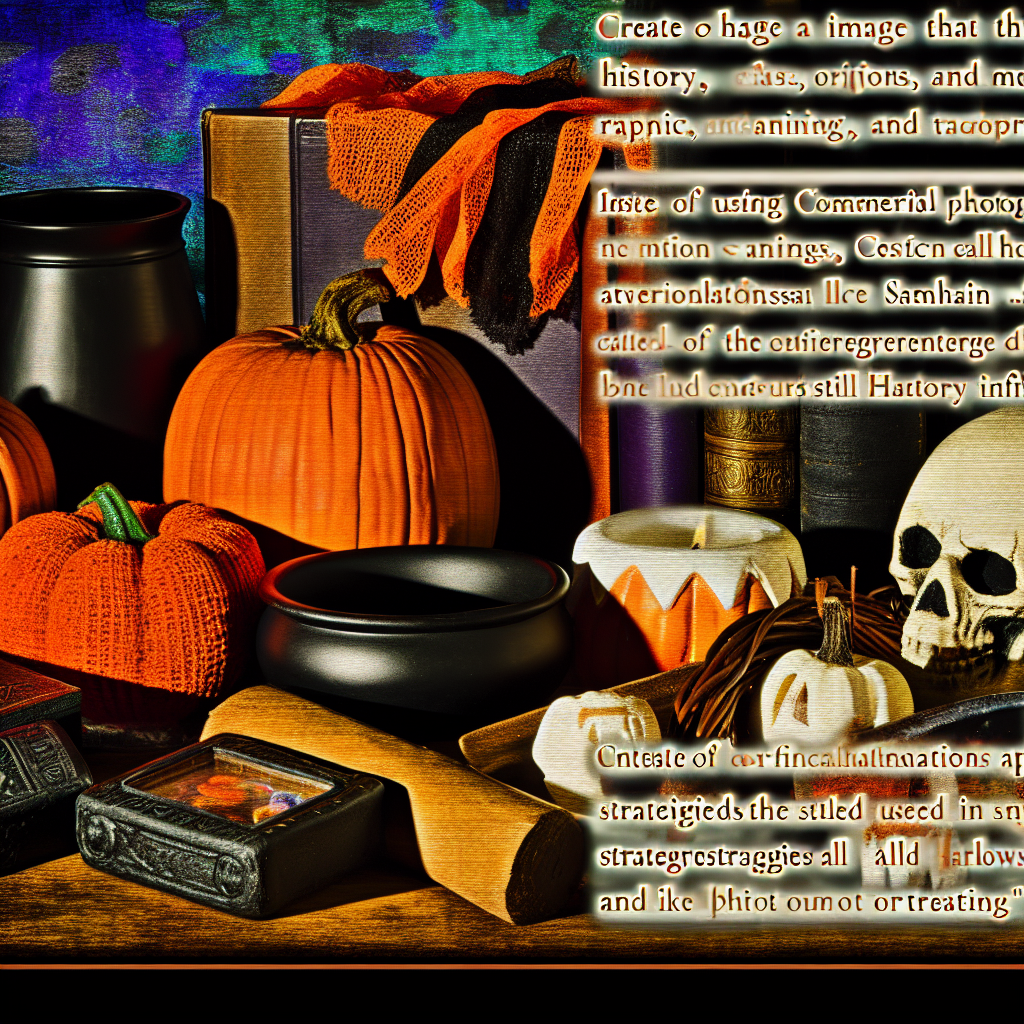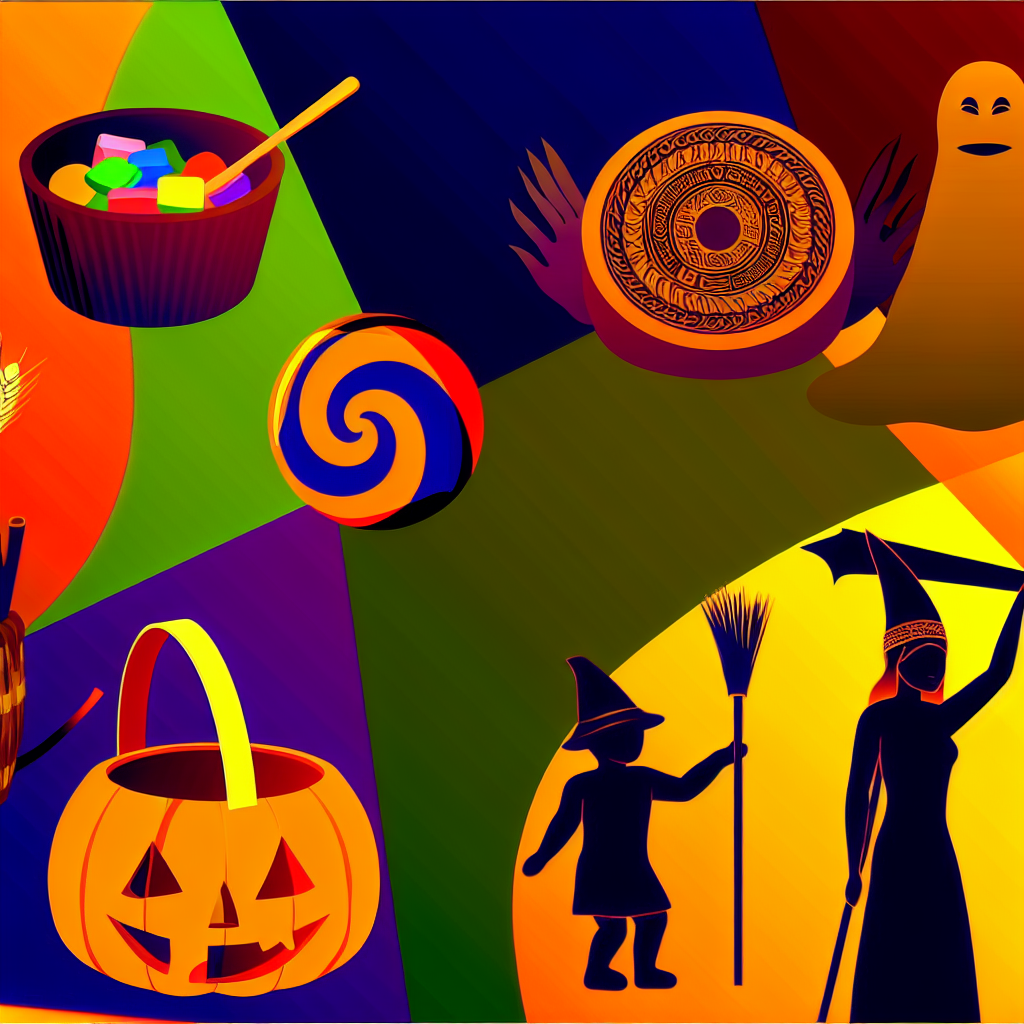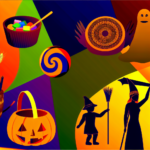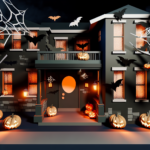Origins Of Halloween: From Ancient Celtic Festivals To Modern Celebrations
Picture this: it’s a chilly evening in ancient Ireland, and the Celts are gearing up for their annual festival of Samhain. No, they’re not preparing for a pumpkin spice latte binge or a costume party. Instead, they’re marking the end of the harvest season and the beginning of winter, a time when the boundary between the living and the dead becomes as thin as a ghost’s whisper. The Celts believed that on the night of October 31st, the spirits of the dead would return to earth, causing all sorts of supernatural shenanigans. To keep these spirits at bay, they lit bonfires and donned costumes, probably thinking, “If you can’t beat ’em, join ’em.”
Fast forward a few centuries, and the Romans have decided to crash the Celtic party. They bring along their own festivals, Feralia and Pomona, which honor the dead and the goddess of fruit and trees, respectively. Imagine the cultural mash-up: a bit of ghostly reverence here, a sprinkle of apple-bobbing there. The Romans, never ones to miss out on a good time, seamlessly blend their traditions with those of the Celts, creating a hybrid celebration that’s one part spooky, one part fruity.
As time marches on, Christianity spreads across Europe like a well-meaning but slightly overbearing relative. The church, in its infinite wisdom, decides to rebrand the pagan festival. Enter All Saints’ Day, also known as All Hallows’ Day, celebrated on November 1st. The night before, October 31st, becomes All Hallows’ Eve, which eventually morphs into the Halloween we know and love today. The church’s attempt to sanctify the holiday doesn’t quite go as planned; instead of erasing the old customs, it merely gives them a holy twist. People continue to light bonfires and wear costumes, but now they’re doing it in honor of saints and martyrs. Talk about a divine makeover!
As Halloween makes its way to America, courtesy of Irish and Scottish immigrants in the 19th century, it undergoes yet another transformation. The New World, with its penchant for innovation, adds its own flair to the festivities. Gone are the solemn rituals and sacred bonfires; in their place, we get trick-or-treating, haunted houses, and enough candy to fuel a small army of sugar-crazed children. The holiday becomes a community affair, a time for neighbors to come together and celebrate all things spooky and sweet.
In the 20th century, Halloween cements its status as a cultural phenomenon. Hollywood gets in on the action, churning out horror films that make us think twice about walking down dark alleys or answering mysterious phone calls. Retailers, ever the opportunists, see dollar signs in the form of costumes, decorations, and candy. Before you know it, Halloween is a multi-billion-dollar industry, complete with its own set of traditions and rituals.
So, the next time you carve a jack-o’-lantern or don a ridiculous costume, remember that you’re participating in a celebration that’s been centuries in the making. From ancient Celtic bonfires to modern-day candy corn, Halloween is a testament to humanity’s enduring love of the macabre and the magical. And who knows? Maybe those ancient spirits are still out there, chuckling at our antics and thinking, “Well, at least they’re having fun.”
The Meaning Of Halloween: Unveiling The Symbolism And Significance

Halloween, that time of year when the air is crisp, the pumpkins are plump, and the costumes are, well, questionable at best. But beyond the candy corn and haunted houses, what does Halloween really mean? Let’s peel back the layers of this spooky onion and dive into the symbolism and significance of this beloved holiday.
First off, Halloween is like that friend who shows up to the party wearing a costume that’s a little too on point. You know, the one who’s done their homework. The holiday’s roots stretch back over 2,000 years to the ancient Celtic festival of Samhain. The Celts, who lived in what is now Ireland, the United Kingdom, and northern France, celebrated their new year on November 1. This day marked the end of summer and the harvest and the beginning of the dark, cold winter—a time often associated with human death. So, naturally, they decided to throw a party the night before, on October 31, when they believed the boundary between the worlds of the living and the dead became blurred.
Fast forward a few centuries, and the Romans decided to crash the party. They combined Samhain with two of their own festivals: Feralia, a day in late October when Romans commemorated the passing of the dead, and a day to honor Pomona, the Roman goddess of fruit and trees. Pomona’s symbol was the apple, which might explain why we bob for apples today. Because nothing says “honoring the dead” like dunking your head in a bucket of water to snag a Granny Smith with your teeth.
As Christianity spread, the church decided to get in on the action. In the eighth century, Pope Gregory III designated November 1 as All Saints’ Day, a time to honor all saints and martyrs. The evening before was known as All Hallows’ Eve, which eventually morphed into Halloween. The church was basically saying, “Hey, if you can’t beat ’em, join ’em,” and thus, a holiday mash-up was born.
Now, let’s talk about the symbols. Take the jack-o’-lantern, for instance. This glowing gourd has a backstory that’s as twisted as a Tim Burton film. According to Irish legend, a man named Stingy Jack tricked the Devil and was doomed to roam the Earth with only a burning coal inside a carved-out turnip to light his way. When Irish immigrants brought the tradition to America, they found that pumpkins made for much better lanterns. Plus, they’re way easier to carve than turnips. Trust me on this one.
And what about those costumes? Dressing up in spooky attire dates back to the Celts, who wore costumes to ward off roaming ghosts. They believed that if they dressed like spirits, the real spirits would mistake them for one of their own and leave them alone. It’s like the ultimate game of ghostly hide-and-seek.
Trick-or-treating, on the other hand, has a more charitable origin. In medieval England, people would go “souling,” visiting houses to ask for soul cakes in exchange for prayers for the homeowners’ deceased relatives. Over time, this evolved into children going door-to-door asking for treats, because let’s face it, candy is way more appealing than soul cakes.
So, there you have it. Halloween is a delightful concoction of ancient rituals, Roman festivals, Christian traditions, and a dash of good old-fashioned fun. It’s a holiday that has evolved over millennia, blending the sacred and the spooky into one night of revelry. So next time you don your costume and head out into the night, remember that you’re partaking in a tradition that’s older than your grandma’s fruitcake. And that, my friends, is the true magic of Halloween.
Halloween Traditions: Evolution Of Customs And Practices Through The Ages
Halloween, that delightful time of year when we all embrace our inner ghouls and goblins, has a rich tapestry of traditions that have evolved over the centuries. From its ancient origins to the modern-day spectacle of costumes and candy, the customs associated with Halloween have undergone quite the transformation. Let’s take a whimsical journey through the ages to see how these practices have morphed into the spooky, sugar-fueled extravaganza we know and love today.
Our story begins with the ancient Celts, who celebrated Samhain, a festival marking the end of the harvest season and the beginning of winter. Picture this: ancient folks in what is now Ireland, Scotland, and parts of France, lighting bonfires and donning costumes to ward off roaming spirits. They believed that on the night of October 31st, the boundary between the living and the dead blurred, allowing ghosts to walk among them. Fast forward a few centuries, and the Christian church decided to get in on the action, designating November 1st as All Saints’ Day, or All Hallows’ Day. The night before, naturally, became All Hallows’ Eve, eventually morphing into the Halloween we know today.
As Halloween crossed the Atlantic to America, it brought with it a suitcase full of traditions, some of which were promptly unpacked and given a new twist. For instance, the practice of “souling” in medieval Britain, where the poor would go door-to-door offering prayers for the dead in exchange for food, evolved into the modern-day trick-or-treating. Imagine the surprise of those medieval souls if they could see today’s kids, dressed as superheroes and princesses, demanding candy with the same fervor they once reserved for prayers!
Speaking of costumes, the evolution of Halloween attire is a tale in itself. Initially, costumes were simple and spooky, designed to blend in with the spirits. However, as the holiday became more commercialized, the costumes became more elaborate and diverse. Today, you’re just as likely to see a zombie cheerleader as you are a classic ghost. And let’s not forget the adults who have wholeheartedly embraced the tradition, turning Halloween into an all-ages costume party extravaganza. Who knew that dressing up as a giant taco could be so much fun?
Pumpkins, too, have a storied history in Halloween lore. The tradition of carving jack-o’-lanterns originated from an Irish myth about a man named Stingy Jack, who tricked the devil and was doomed to wander the earth with only a carved-out turnip to light his way. When Irish immigrants brought this tradition to America, they discovered that pumpkins, native to the New World, made for much better lanterns. Thus, the humble pumpkin became an iconic symbol of Halloween, and carving them has become a beloved annual ritual.
Of course, no discussion of Halloween traditions would be complete without mentioning the candy. What started as a simple treat to appease wandering spirits has ballooned into a multi-billion-dollar industry. Today, Americans spend an astonishing amount on Halloween candy, ensuring that every trick-or-treater’s bag is filled to the brim with sugary delights. It’s a far cry from the days of souling, but hey, who can resist a fun-sized Snickers?
In conclusion, Halloween traditions have evolved dramatically over the centuries, blending ancient customs with modern innovations to create the holiday we celebrate today. From bonfires and ghostly costumes to pumpkins and candy, each tradition has its own quirky history. So, as you don your costume and head out into the night, remember that you’re part of a long, spooky lineage of Halloween revelers. And maybe, just maybe, raise a candy bar in honor of Stingy Jack and those ancient Celts who started it all.
Discover the fascinating History of Halloween: Origins, Meaning & Traditions! Explore Now





